Long walks. Forcing uphill run, even after a hearty meal. Skydiving, proficient handling of various types of weapons, and even horse riding. Training American paratroopers made them the army elite ... if, of course, they survived.
The enlistment for American parachute units was voluntary. As a result, motivated people came to them, expecting something more from military service than just marches and digging in. Those who did not think that military service was a catastrophe, a life defeat and a hole in the biography.
Airborne troops chose recruits who were looking for a thrill and wanted to be better than the rest of the "regular infantry". But there was also more to it.
This is how the motives of future paratroopers were described by the famous American historian Stephen E. Ambrose:
(...) They knew they were going to war. If so, they had no intention of ending up there with unlearned, weak conscripts. With a choice - to parachute as the vanguard of the offensive or to walk foot by foot in a crowd of people who cannot be trusted - they decided that they had less chance of survival as the gray mass of cannon fodder. When they started shooting at them, they preferred to end up somewhere where they could look at their neighbor with hope rather than fear.
And it's hard not to agree with them. Especially that the level of training of amphibious troops was indeed much higher than in other, less prestigious units. How was this ensured?
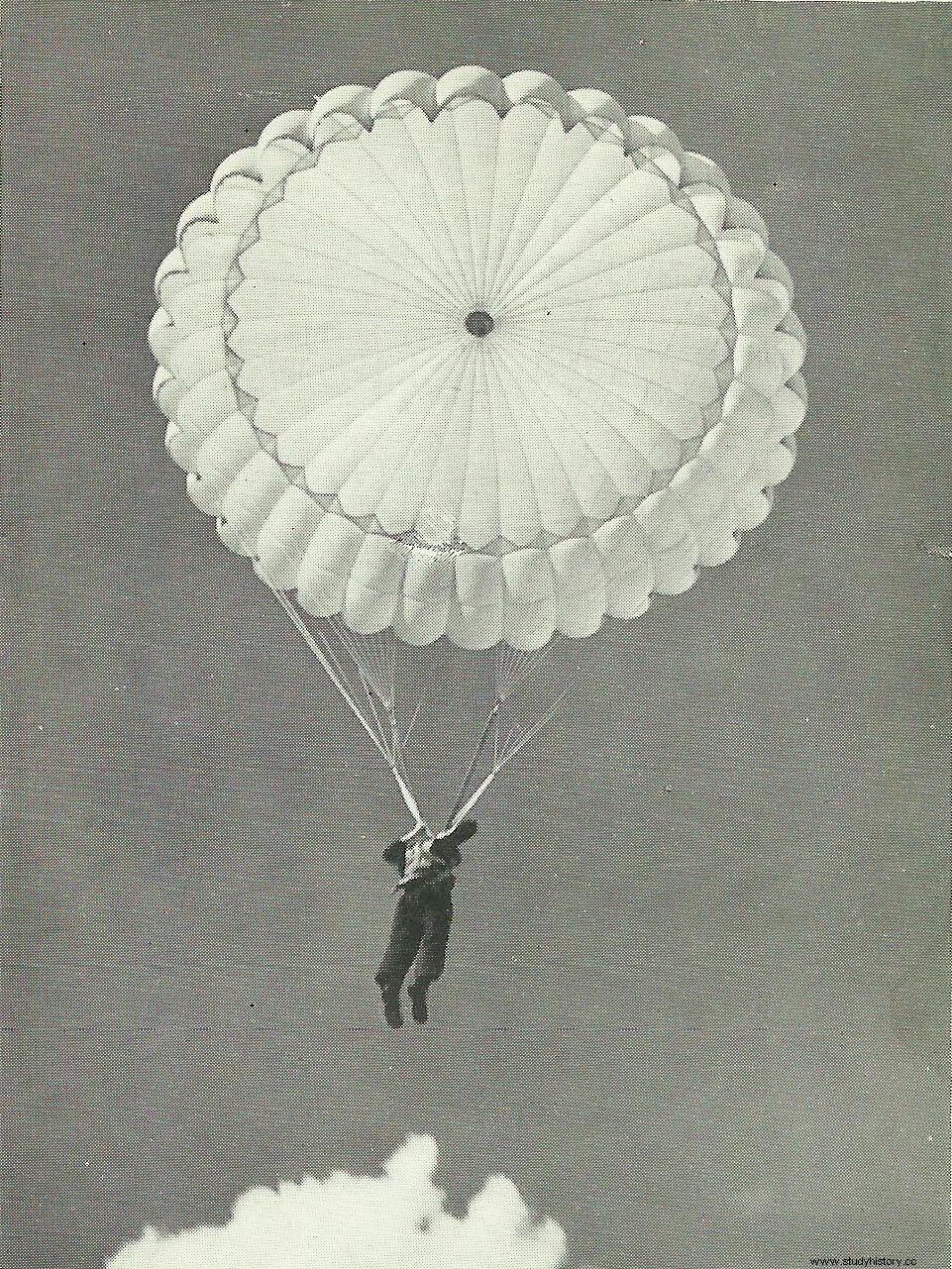
Only the best got into the ranks of the paratroopers.
Training until exhausted
The very selection of volunteers for the parachute service was strict. Only the best were recruited. Out of more than 500 men who volunteered for NCOs in the 506th Parachute Infantry Regiment, only 148 were selected. 1,800 soldiers joined them, selected from among 5,300 applicants. The unit later became part of the famous 101st Airborne Division.
The chosen ones had to undergo almost murderous training. Let us remind you that the ranks were composed of completely green boys who had never had anything to do with the army before. They had to be toughened up physically and mentally. They were taught to drill, operate small arms and operate support weapons, i.e. erkaems, mortars and anti-tank grenade launchers. They learned about the tactics of infantry and airborne troops. They practiced skydiving, the handling of explosives and the provision of first aid.
The recruits had to develop an extraordinary physical condition. As Dick Winters mentions in his book "Beyond the Company of Brothers" , commander of the company E 506th Parachute Infantry Regiment, immortalized in Steven Spielberg's series "Band of brothers":
Daily gymnastics consisted of stick-ups, crunches, deep squats, jumpers and running. Surprisingly, at the end of the first week, the soldiers began to meet the physical requirements for serving in the airborne forces. Those who did not adapt were moved outside the regiment. Colonel Sink required training to be intense at all times, and to be pushed almost to the brink of exhaustion by each soldier.
The soldiers ran over the obstacle courses every day, did gymnastics and marches, both with and without backpacks, bayonets, rifles and machine guns. The training never stopped and the training got harder every day.
Cursed Currahee Hill
The soldiers of the 506th Regiment remember the Currahee hill near their training camp in Georgia in a special way. It wasn't high - about 450 meters - but the ten-kilometer run to the top and back was very exhausting. This is what Winters writes about it, who felt the "pleasure" of climbing the ascent:
The run was truly murderous. To reach Currahee with the company, it was necessary to jog it, then, when you could feel the formation collapsing with fatigue, the pace changed to " brisk walking. " When the ranks closed again and people caught their breath, we went back to jogging. We traveled the last kilometer and a half up the slopes mainly with a brisk walk. I don't remember anybody racing to the top and back in a competition where we were unlimitedly " ran "onto Currahee.
One day the soldiers were told that there would be no running today. So the company went to dinner, where it was fed greasy spaghetti and meatballs. However, what was the surprise of the recruits when, after leaving the canteen, the whistle for the assembly sounded, and the commander unexpectedly commanded:"To the top of the mountain, march!". As they faced Currahee, the soldiers kept stopping and vomiting. There were several ambulances behind the running company. However, whoever used the car left the vessel on the same day.
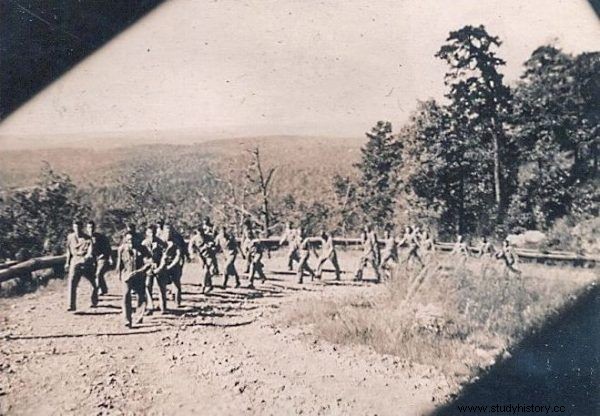
Soldiers of the 506th Parachute Infantry Regiment during "conquering" Currahee Hill.
There is no place for wimps
Not only such unique exercises became the basis for selection in elite units. It actually lasted all the time. Attempts were made at a relatively early stage to screen out those who are not physically and mentally predisposed to perform the demanding service. In this respect, the training was similar to that of the Marines and Special Forces of the US Army today.
"We mainly dealt with sorting people, separating the grain from the chaff and sifting out those unfit for our service," recalled one of the officers of the 506th Regiment. Those who did not meet the stringent requirements and "got away" were transferred to a specially created W company, and then sent to other units. Since the newly arrived soldiers also joined the "W", the rotation took place almost every day.
One of the most popular training and selection tools was the obstacle course. It was built in such a way that the individual obstacles influenced the development of strength and fitness of the exercisers. They prepared them, among other things, to control the parachute and to fight for a long time. For example, to strengthen the arm muscles, the recruits climbed a ladder suspended horizontally above the water. They had to grab the rungs alternately with one hand and the other. The three-meter high wooden wall was also an exceptionally difficult obstacle. She had to be defeated with the help of colleagues.
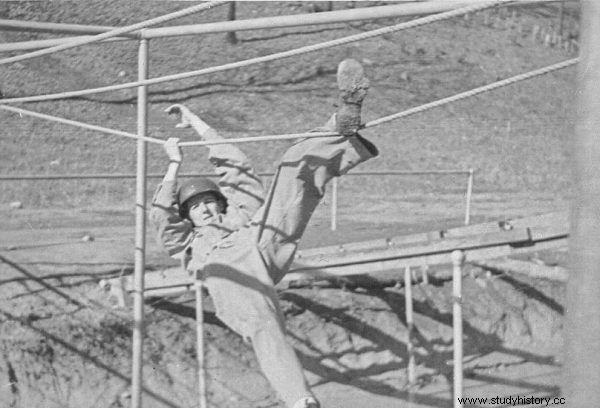
The obstacle course built the soldiers' physical strength and efficiency.
To make things even more difficult, there were hills between the obstacles, which had to be run over, and ditches and trenches that had to be jumped over. As a result, everyone who completed the track was physically exhausted. What about those who did not complete the course within the allotted time (three minutes!) Or did not pass an obstacle? Of course, they flew out of the regiment. “To say that training at Toccoa was intense is an understatement. Colonel Sink insisted that the standards be extremely high, ”comments Dick Winters in“ Beyond Band of Brothers ”.
Future paratroopers were also prepared for long marches with gear. In the end, airborne soldiers arrive at the place of combat by airplanes, but on the spot they move and fight on foot.
Company E started training by covering "only" 16 kilometers. Then there was a night walk for 18 kilometers. Ultimately, routes were planned to be as long as 40 kilometers. As if that was not enough, to build the strength of the soldiers, Lieutenant Herbert Sobel, who was at the head of the unit, forbade his subordinates to drink water. You couldn't even take a sip from the canteen until the march was over.
The ambition of the officers of the 506th Regiment, when it comes to the endurance of soldiers prepared for combat, was sometimes downright morbid. One day the unit commander, Colonel Robert Sink, read in a newspaper that a Japanese infantry battalion had set a world record for the length of the march. It covered 150 kilometers along the Malay Peninsula in 72 hours. Without thinking for long, the military decided to break this record.
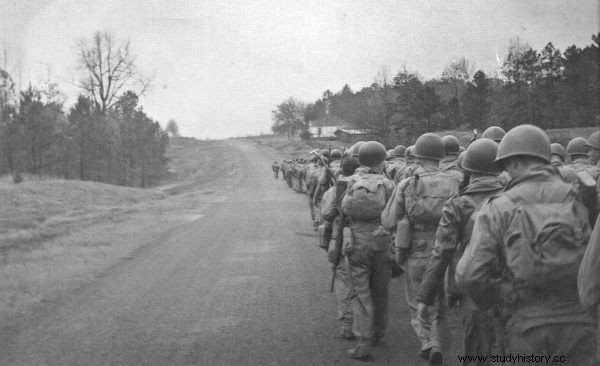
Soldiers of the 506th Parachute Infantry Regiment march from Atlanta to Fort Benning.
The Colonel appointed the 2nd Battalion to perform this honorable task. It was commanded by Major Robert Strayer, "who chased his soldiers most in the entire regiment." The unit was taken to Atlanta by train with all its equipment. Then a murderous march began. The soldiers, struggling with wind and rain mixed with snow, returned to the unit after 75 hours. They traveled 190 kilometers.
Private parachute, horseback officers
Skydiving was an extremely important element of the training. In the Georgia camp, special towers were used for exercises. At their top, the soldier was put on a parachute harness, attached to a rope, and then it jumped out through a dummy door. When landing, he had to take the right position to avoid a hard collision with the ground.
In the second stand, the recruits were pinned to a harness suspended on a suitable device. It squeezed and stretched different parts of the body in all directions, simulating a parachute flight. Only after such preparation, the soldiers were transported to Fort Benning, where, after additional training, they performed real jumps from airplanes. In turn, officers who had jumped before, learned the basics of riding a motorcycle, learned to swim and learned about ... horse riding.
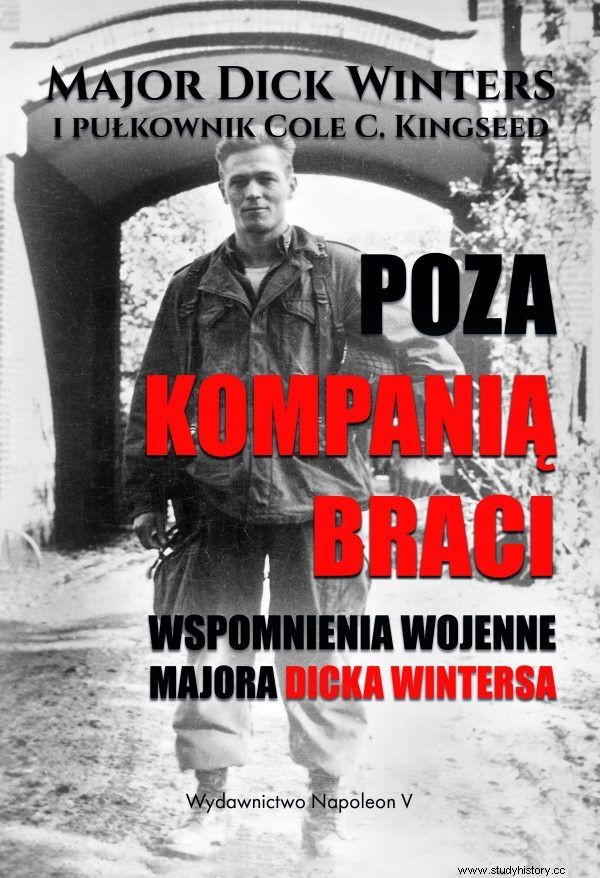
The exercise administered to soldiers in Georgia around Thanksgiving has become famous. Bloodied pig intestines were scattered under the barbed wire stretched in the field:hearts, livers, intestines. The subordinates were to crawl under the wires. To make sure they keep their heads low, were deployed two 7.62mm machine guns firing live ammunition over the barbed wire.
The whole thing very realistically imitated the conditions of a real battlefield. "We were extremely motivated to keep our heads and buttocks in the pig's guts. I think it was a great exercise, and I'm sure everyone will remember it, "wrote Winters.
The best battalion in the army
The training also included getting to know weapons. The paratroopers had to become thoroughly familiar with the entire arsenal of the company, from the M1 Garand rifle to the 60mm mortar. During additional training, they gained proficiency in folding and unfolding machine guns. In addition, they learned bayonet and hand-to-hand combat. And when the weather was bad, they spent their time reading maps and practicing the use of the compass. They also listened to lectures on infantry tactics, field telephone communications, first aid, signaling and the use of explosives.
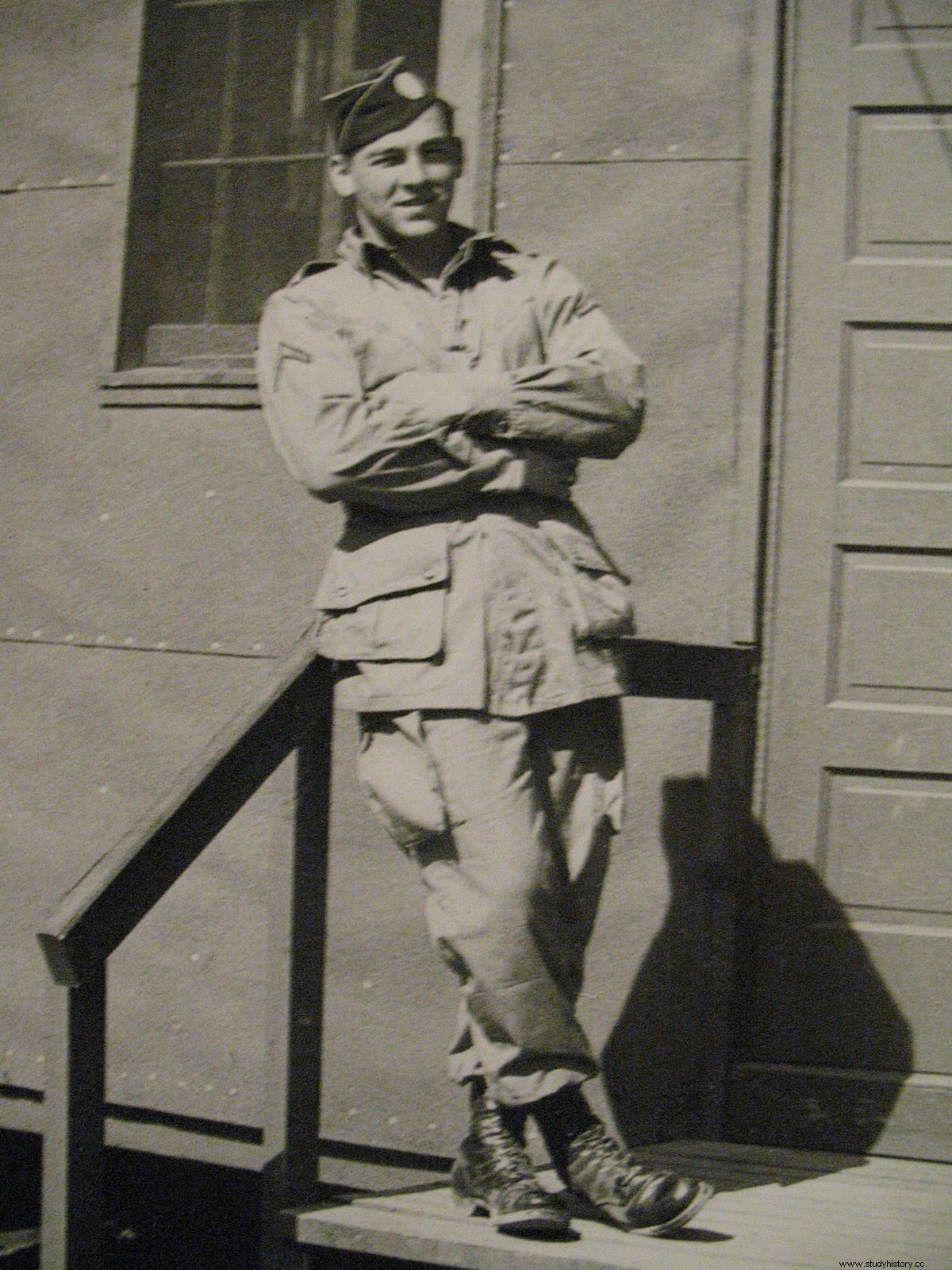
Murderous training and discipline made the paratroopers a true elite of the American army. In the photo Forrest Guth from the famous company E. Camp Mackall 1942.
Between these classes, the most important point of the program, i.e. parachute jumping, was perfected. They were held all the time, not only with personal weapons, but also with support weapons and supplies. The platoons dropped in the field were to report in the right place at the appointed time. In this way, the ability to move and operate behind enemy lines was practiced.
Regular checks were carried out to check the preparation of the units. A record result for a battalion in the entire US Army was achieved by Major Strayer's 2nd Battalion, in which Dick Winters served. In the spring of 1943 at Camp Mackall, North Carolina, the unit's troops managed to score as much as 97 out of 100 possible points.
Skills acquired during the training paratroopers, including Winters' subordinates from the E company, showed after the creation of the second front in Europe. They fought in Normandy, the Netherlands, to defend Bastogne, and repelled the German counter-offensive in the Ardennes to finally take Germany. They did a great job.
